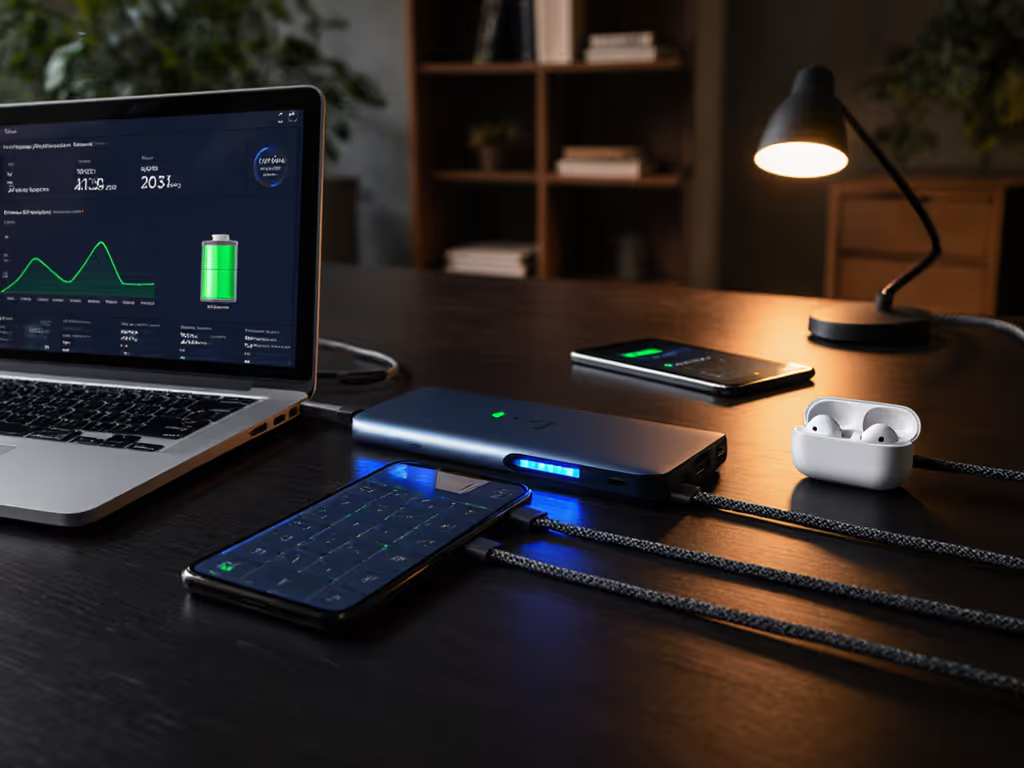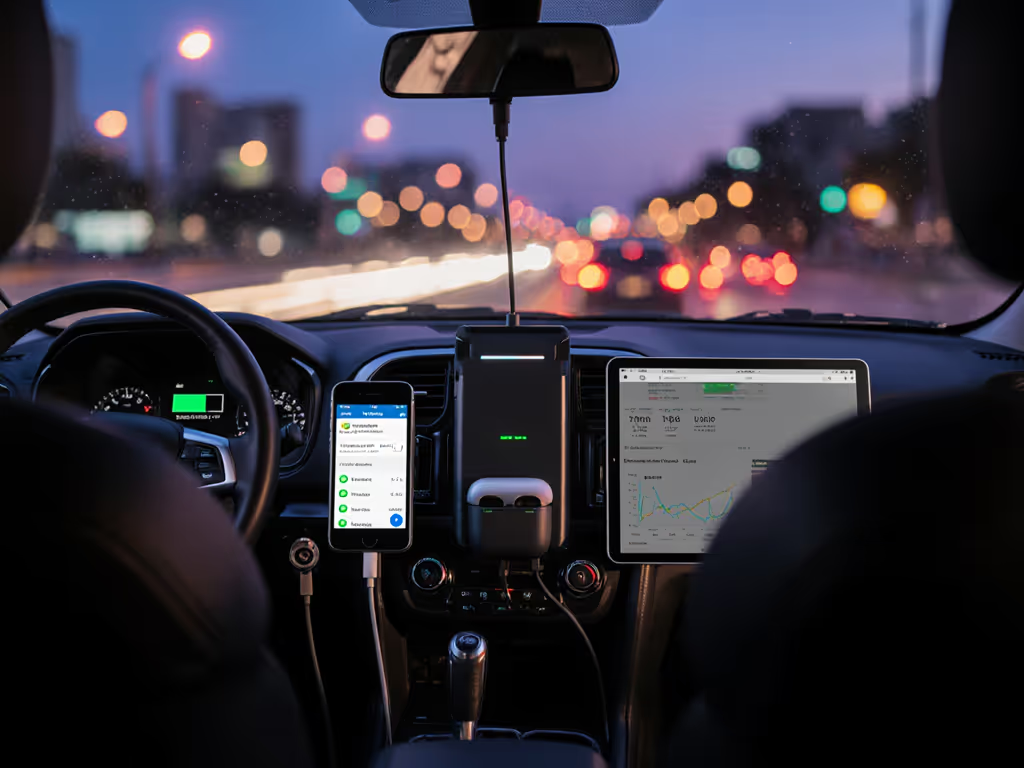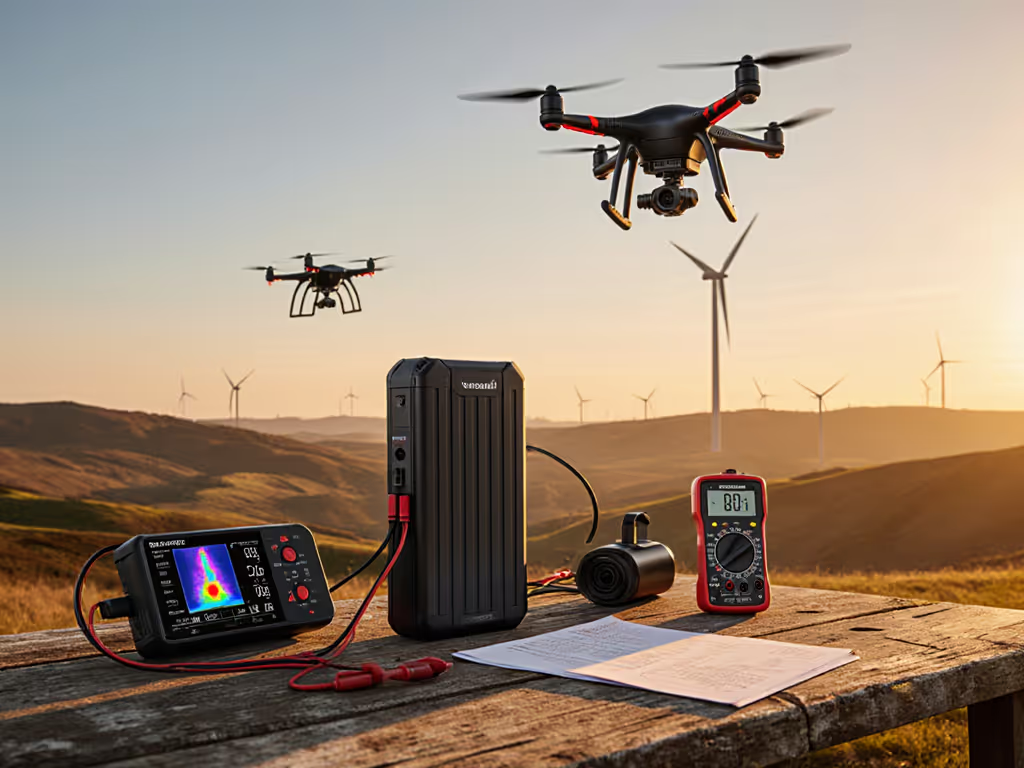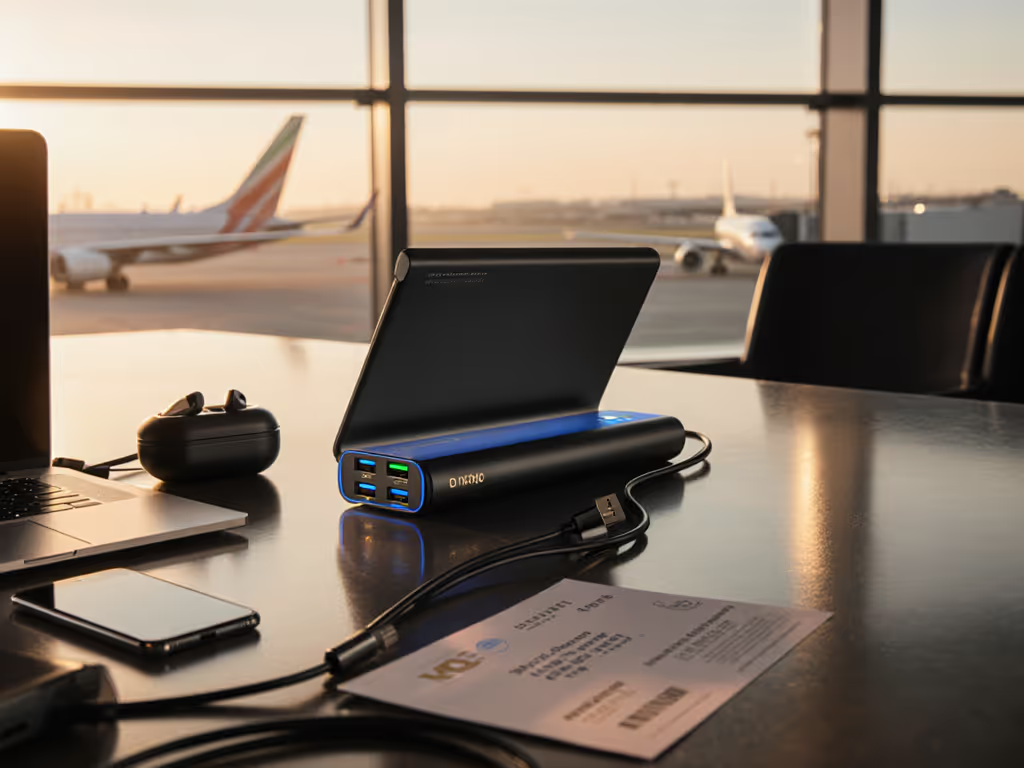
Secure Data Power Banks: Encrypted Charging Solutions

Modern travelers increasingly rely on portable power banks for critical device uptime, but few consider the data security risks these devices might introduce. When your phone connects to a public charging station or shared power bank, you're potentially exposing sensitive information to "juice jacking" attacks that bridge power delivery with data extraction. Understanding data-safe charging solutions has become essential for business travelers, journalists, and security-conscious professionals who can't afford compromised devices. Airline-ready means documented (not just physically compliant but data-secure across all touchpoints). See our airline compliance guide for rules, labeling requirements, and what airport security actually checks.
What are the primary data security threats when using shared or public charging stations?
Juice jacking remains the most documented threat, where malicious USB ports contain hidden hardware that creates a data connection while appearing to offer only power. Researchers have developed inexpensive tools like 'PowerSnitch' that create "covert communications channels in the power current" during charging. These attacks can harvest credentials, contacts, and other sensitive data without user awareness.
Corporate security teams face additional risks:
- Unauthorized data transfer through USB OTG (On-The-Go) functionality
- Malware injection disguised as firmware updates
- Location tracking via compromised charging infrastructure
- Data exfiltration during charging sessions at airports or conference centers
The risk matrices and mitigations developed by cybersecurity firms now categorize public charging as a "medium-high" threat vector for organizations handling sensitive information (particularly those operating in regulated industries or geopolitical hotspots).
How do "data-safe charging solutions" actually prevent data theft during charging?
True data isolation requires physical separation of data and power pathways, not just software settings. Here's how certified secure devices accomplish this:
-
Hardware-level circuit isolation: Dedicated charging ICs that physically disconnect USB data lines (D+ and D- pins) while maintaining power delivery (this is the most reliable method)
-
Encryption protocols: "STW brand uses the AES-256 encryption algorithm to protect all communications between the power bank and the power bank's servers"
-
Firmware verification: Systems that implement "firmware signature verification mechanisms" to prevent unauthorized code execution
-
One-way power flow design: Certified secure power banks eliminate data negotiation entirely (power flows in one direction only, with no handshake capability) For a deeper look at power routing topologies and their security implications, read our pass-through charging guide.
The most robust solutions combine multiple layers of protection. Financial-grade encryption (AES-256) protects transmitted data, while physical circuit separation prevents initial data connections. This multi-layered approach aligns with NIST guidelines for mobile device security in enterprise environments.
What encryption standards should I verify for in secure portable power banks?
Not all "encrypted" claims are equal. When auditing power banks for corporate use, I verify these normative references cited in security documentation:
-
AES-256 encryption for data in transit
-
FIPS 140-2/3 certification for cryptographic modules (particularly important for government and financial sector use)
-
TLS 1.2+ implementation for any network-connected charging infrastructure
-
Secure boot processes that verify firmware integrity before operation
Qi2 authentication chips that incorporate advanced security features are emerging as well. "STSAFE-A110 integrates the latest generation highly secure MCU, each chip possessing a unique serial number, featuring functionalities like active shielding, monitoring environmental parameters..." These specialized chips represent the bleeding edge of charging security, though they're currently limited to wireless charging implementations. To understand when wireless makes sense and how Qi authentication affects efficiency, start with our wireless power bank guide.
Clear acceptance criteria for security verification must include physical evidence of these protections (not just marketing claims). Audit the documentation for specific encryption standards, not generic "secure" language.
How can business travelers verify if a power bank is truly data-safe before purchase?
Many manufacturers claim "data-safe" functionality without verification. I recommend these verification steps based on UN38.3 documentation standards:
- Check for explicit "charging-only" certification: Look for statements like "data pins disconnected" or "hardware isolated data lines" in technical specifications
- Verify encryption claims: If a manufacturer states AES-256 encryption, demand to see which components implement it and what data is protected
- Examine regulatory documentation: Legitimate solutions often incorporate "server, database, user data, and payment encryption" (request full documentation)
- Physical inspection: The USB ports should appear physically modified (often with filled data pins) rather than standard connectors
- Third-party testing reports: Reputable manufacturers commission independent security audits of their charging solutions
I recall an airport checkpoint incident where a journalist's credentials were nearly compromised because they used a standard power bank that negotiated data transfer while charging. Their "secure" device lacked proper circuit isolation, just a software switch that could be overridden. Complete documentation would have revealed this vulnerability beforehand. Safety paperwork and labels are features, not afterthoughts.
What are the key differences between standard consumer power banks and corporate security power banks?
| Feature | Standard Power Bank | Corporate Security Power Bank |
|---|---|---|
| Data Lines | Connected for potential data transfer | Physically disconnected or fused |
| Encryption | Rarely implemented | AES-256 for data in transit and storage |
| Firmware Verification | Usually absent | Digital signature verification required |
| Security Certifications | Rare | FIPS 140-2/3, Common Criteria often present |
| Physical Tamper Evidence | None | Sealed housings with tamper-evident features |
| Documentation | Basic user manuals | Full technical specifications with security protocols |
Some products are described as offering "built-in hardware-level encryption, firewalls, and antivirus protection" (these represent the enterprise-grade solutions that provide true tamper-proof power solutions). The premium reflects the additional engineering required to meet precise labeling language (Wh, limits) and security requirements simultaneously.
Can secure power banks also meet airline compliance standards?
Absolutely, and they should. Many organizations make the mistake of treating physical safety (UN38.3 certification) and data security as separate concerns. Comprehensive risk management requires both. For safe handling, storage, and policy templates, refer to our compliance-first usage guide.
The most sophisticated corporate security power banks now integrate both requirements:
- UN38.3 certification for safe air transport (with proper Wh labeling)
- Physical circuit isolation preventing data transfer
- Encryption for any network-connected functionality
- Clear labeling language showing both watt-hour capacity and security certifications
I recently audited a deployment where power banks met all security requirements but lacked proper Wh labeling, causing airport confiscations that disrupted business operations. Compliance is a tangible feature that prevents losses at checkpoints and on-site. Airline-ready means documented across both safety and security dimensions.
What practical steps can frequent travelers implement today for secure charging?
Safety paperwork and labels are features, not afterthoughts.
- Carry a verified charging-only cable: These have the data pins physically disconnected (often colored red for identification)
- Use your own power bank with documented security features: Anker's "trickle-charging mode" demonstrates how features can serve multiple purposes, including security when properly implemented
- Verify airport power stations: Look for "charging only" labels on public stations (increasingly common in major airports)
- Enable USB restriction mode: On iOS devices, activate "Settings > Face ID & Passcode > USB Accessories" to require authentication before data connection
- Request documentation: When purchasing for corporate use, require complete technical specifications including security protocols
For organizations deploying shared charging infrastructure, CHEYOLL's approach is illustrative: "User Data Encryption. To safeguard user privacy and data security, CHEYOLL encrypts sensitive data such as personal and payment information." Enterprise solutions should provide this level of transparency.
Final Verification: Ensuring Your Power Solution is Truly Secure
When evaluating encrypted charging devices, demand more than marketing claims. Verify:
- Physical circuit isolation (not just software switches)
- Specific encryption standards implemented (AES-256, not just "encryption")
- Complete documentation matching physical implementation
- UN38.3 certification for air travel compliance
- Precise labeling language showing both security and capacity specifications
The best tamper-proof power solutions don't just promise security, they demonstrate it through verifiable documentation and transparent engineering. As regulatory requirements evolve (particularly GDPR, CCPA, and sector-specific regulations), having documented security processes becomes increasingly critical.
For those responsible for equipping security-conscious teams, the next step involves conducting a thorough documentation audit against your organization's specific risk profile. If your staff travels frequently, our business travel power bank guide curates reliable, checkpoint-proof options. Request full technical specifications from manufacturers, not just consumer-facing materials. Compare security implementations against established frameworks like NIST SP 800-163 for mobile device security. True peace of mind comes from verified compliance, not marketing promises.
Related Articles


Rideshare Driver Power Banks: Proven Continuous Charging

Power Bank Subscription: Protocol-Tested Reliability Explained

Proven Drone Power Banks: Close the Rated Capacity Gap

